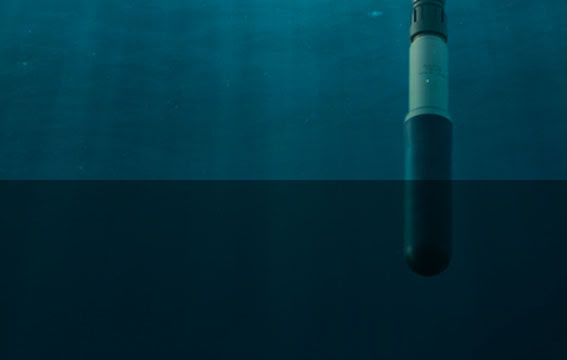
Idrofoni
Gli idrofoni Brüel & Kjær sono trasduttori sonori calibrati individualmente. Ogni idrofono è caratterizzato da una risposta in frequenza piatta e sono omnidirezionali su un'ampia gamma di frequenze. Inoltre, la loro costruzione è assolutamente impermeabile, resistente alla corrosione e può resistere ad alti livelli di salinità. Se siete alla ricerca di un idrofono di qualità che funzioni a 1000 m di profondità, che possa resistere a pressioni statiche fino a 100 bar e che sia costruito per durare - vi trovate nel posto giusto.
Hydrophone Specifications-
MODELLO 8105
Idrofono sferico con 10m di cavo integrato terminato con connettore BNC
Un robusto idrofono sferico utilizzabile fino a 1000 m di profondità con eccellenti caratteristiche direzionali.
-
MODELLO 8106
Ha un amplificatore incorporato che garantisce un segnale adatto alla trasmissione su lunghi cavi. È utilizzabile fino a 1000 m di profondità.
-
MODELLO 8103
Idrofono in miniatura con cavo integrato da 6 m terminato con connettore microdot 10-32UNF
Adatto per l'uso industriale e di laboratorio ad alta frequenza e in particolare per lo studio acustico di animali marini o per la cavitazione.
-
MODELLO 8104
Idrofono per misurazioni standard con cavo integrato da 10 mt e terminato con connettore BNC.
Un idrofono per uso generico, ideale anche per la calibrazione

HYDROPHONE SPECIFICATIONS
Brüel & Kjær hydrophones are piezoelectric transducers, designed to be used underwater for recording or listening to underwater sound.
The ceramic piezoelectric sensing element and its internal supporting structure are permanently bonded into sound-transparent, lead-free, nitrile butadiene rubber. Support structures are made from metal alloys that are extremely resistant to corrosion in virtually all hostile environments and have very good anti-fouling properties when immersed in seawater.
The internal support is mechanically and electrically isolated from the metal housing, being coupled only by synthetic rubber. This provides vibration isolation of the sensing element.
RECEIVING SENSITIVITY
Each Brüel & Kjær hydrophone is submitted to an extensive aging and temperature stabilizing procedure before being individually calibrated. Individual calibration data and frequency response curves are supplied with each hydrophone.
The receiving sensitivity calibration of the hydrophones is traceable to international standards.
FREQUENCY RESPONSE
The frequency response of the four hydrophone types is shown here:

POLAR DIRECTIVITY
B&K Hydrophones deliver great omnidirectional sound measurements. The individual hydrophone directivity patterns in water, are shown here:
The polar directivity patterns were measured in free-field conditions achieved using gating techniques in a water tank. This requires a standard hydrophone as a projector and the unknown hydrophone as the receiver.
HYDROPHONE COMPARISON
|
|
Type 8103 |
Type 8104 |
Type 8105 |
Type 8106 |
|
Sensitivity* |
-211 dB re 1 V/μPa +/- 2dB |
-205 dB re 1 V/μPa +/- 3 dB |
-205 dB re 1 V/μPa +/- 2 dB |
-173 dB re 1 V/μPa +/- 3 dB |
|
Nominal Voltage Sensitivity |
29 μV/Pa |
56 μV/Pa |
2.24 mV/Pa |
|
|
Nominal Charge Sensitivity* |
0.1 pC/Pa |
0.44 pC/Pa |
0.41 pC/Pa |
N/A |
|
Capacitance* (incl. standard cable) |
3700 pF |
7800 pF |
7250 pF |
N/A |
|
Frequency Response* (re 250 Hz) Continuous is valid with integral cable |
0.1 Hz to 20 kHz +1/–1.5 dB |
0.1 Hz to 10 kHz +/-1.5 dB |
0.1 Hz to 100 kHz +1/-6.5 dB |
10 Hz to 10 kHz +0.5/-3.0 dB |
|
Length up to: |
0.1 Hz to 100 kHz +1.5/-6.0 dB |
0.1 Hz to 80 kHz +/-4.0 dB |
0.1 Hz to 160 kHz +3.5/-10.0 dB |
7 Hz to 30 kHz +0.5/-6.0 dB |
|
|
0.1 Hz to 180 kHz +3.5/-12.5 dB |
0.1 Hz to 120 kHz +4/-12.0 dB |
|
3 Hz to 80 kHz +6/-10.0 dB |
|
Horizontal Directivity † (Radial, XY Plane) |
+/- 2 dB at 100 kHz |
+/- 2 dB at 20 kHz |
||
|
Vertical Directivity (axial, xz plane): |
+/-4 dB at 100 kHz |
+/-2 dB at 50 kHz |
+/-2 dB over 270° at 80 kHz +/-2.5 dB at 100 kHz |
+/-3 dB at 20 kHz |
|
Leakage Resistance* (at 20 °C) |
>2500 MΩ |
|
||
|
Operating Temperature Range: |
-30 to +120 °C |
-10 to +60 °C |
||
|
Sensitivity Change with temperature: |
0 to +0.03 dB/°C 0 to -0.03 dB/°C |
0 to +0.03 dB/°C 0 to -0.04 dB/ °C |
0 to +0.03 dB/°C 0 to -0.03 dB/°C |
– 0 to +0.01 dB/°C |
|
Max. Operating Static Pressure: |
252 dB |
|
||
|
Sensitivity Change (Static Pressure): |
0 to –3 × 10–7 dB/Pa |
0 to 1 × 10–7 dB/Pa 0 to 0.01 dB/atm |








